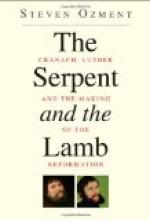Governor Printz arrived in this country in 1642, and with him came Rev. John Campanius as chaplain and pastor of the Swedish colony. His grandson, Thomas Campanius Holm, many years after published numerous items put on record by the elder Campanius, in which it appears that the commands to Printz respecting the Indians were very scrupulously carried out.
According to these records, the Indians were very familiar at the house of the elder Campanius, and he did much to teach and Christianize them. “He generally succeeded in making them understand that there is one Lord God, self-existent and one in three Persons; how the same God made the world, and made man, from whom all other men have descended; how Adam afterward disobeyed, sinned against his Creator, and involved all his descendants in condemnation; how God sent his only-begotten Son Jesus Christ into the world, who was born of the Virgin Mary and suffered for the saving of men; how he died upon the cross, and was raised again the third day; and, lastly, how, after forty days, he ascended into heaven, whence he will return at a future day to judge the living and the dead,” etc. And so much interest did they take in these instructions, and seemed so well disposed to embrace Christianity, that Campanius was induced to study and master their language, that he might the more effectually teach them the religion of Christ. He also translated into the Indian language the Catechism of Luther, perhaps the very first book ever put into the Indian tongue.
Campanius began his work of evangelizing these wild people four years before Eliot, who is sometimes called “the morning star of missionary enterprise,” but who first commenced his labors in New England only in 1646. Hence Dr. Clay remarks that “the Swedes may claim the honor of having been the first missionaries among the Indians, at least in Pennsylvania."[36] “It was, in fact, the Swedes who inaugurated the peaceful policy of William Penn. This was not an accidental circumstance in the Swedish policy, but was deliberately adopted and always carefully observed."[37]
When Mr. Rising became governor of the Swedish colony he invited ten Indian chiefs, or kings, to a friendly conference with him. It was held at Tinicum, on the Delaware, June 17, 1654, when the governor saluted them, in the name of the Swedish queen, with assurances of every kindness toward them, and proposed to them a firm renewal of the old friendship. Campanius has given a minute account of this conference, and recites the speech in which one of the chiefs, named Naaman, testified how good the Swedes had been to them; that the Swedes and Indians had been in the time of Governor Printz as one body and one heart; that they would henceforward be as one head, like the calabash, which has neither rent nor seam, but one piece without a crack; and that in case of danger to the Swedes they would ever serve and defend them. It was at the same time further arranged and agreed that if any trespasses were committed by any of their people upon the property of the Swedes, the matter should be investigated by men chosen from both sides, and the person found guilty “should be punished for it as a warning to others."[38] This occurred when William Penn was but ten years of age, and twenty-eight years before his arrival in America.




